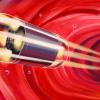Helen Aitkenhead, Consultant Clinical Scientist at Great Ormond Street Hospital for Children, looks at the latest on ammonia analysis and reporting.

Recognition and treatment of hyperammonaemia, especially in the neonatal period, is a clinical emergency. If patients are left untreated, morbidity and mortality are high.
Hyperammonaemia can be difficult to identify and clinicians are reliant on laboratories for the diagnosis. Sadly, the literature is littered with case reports of both children and adults who die as a consequence of hyperammonaemia. The rejection of samples for ammonia analysis by laboratories may be contributing to the problem.
Ammonia toxicity
Ammonia is produced from the deamination of amino acids in the liver, muscle and kidney, and by the action of gut bacteria. In the liver, ammonia is converted to urea, via the urea cycle, for excretion by the kidneys. In both children and adults, plasma ammonia levels are typically less than 40 μmol/L. In neonates, levels tend to be somewhat higher, but typically less than 100 μmol/L.
Mildly raised levels up to 80 μmol/L are seen quite commonly in children and adults, and in neonates any illness may result in levels around 150 μmol/L. Any ammonia >150 μmol/L in children, or >200 μmol/L in neonates and >100 μmol/L in adults requires immediate attention. Ammonia is neurotoxic, so symptoms are essentially neurological. However, there is a wide clinical spectrum with varying severity and age of onset. Neonates, with inherited metabolic disorders resulting in hyperammonaemia, may have overwhelming illness (often mistaken for sepsis) with rapid deterioration from poor feeding and vomiting to tachypnoea, convulsions and coma. Respiratory alkalosis may be an early sign.
There should be a low threshold for suspicion of hyperammonaemia in any neonate with neurological deterioration for no apparent cause. Patients may die during an acute episode, due to cerebral oedema. Those who survive the crisis often have a remaining handicap or neurological deficit. Milder defects may result in chronic hyperammonaemia and may not present until later in life.
Symptoms may be episodic and non-specific, such as vomiting, faddy eating, behavioural changes, slow developmental progress and neurological deficits, meaning hyperammonaemia may be difficult to recognise. Untreated hyperammonaemia can cause irreversible brain damage and death at any age.




